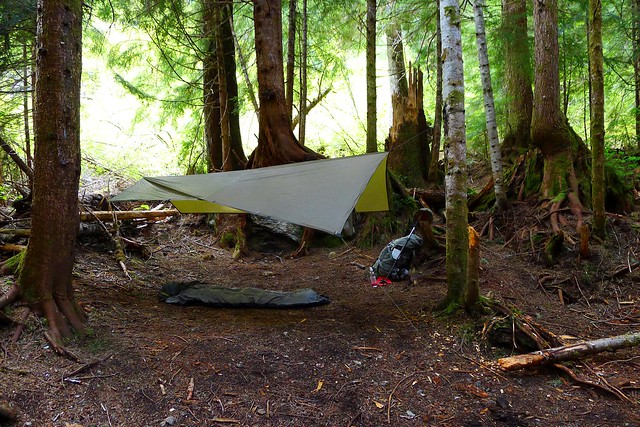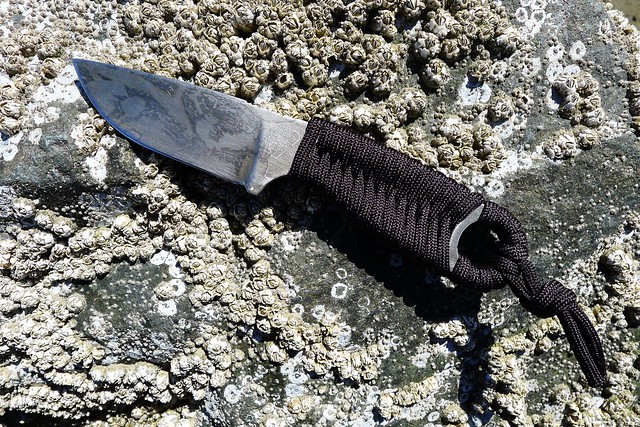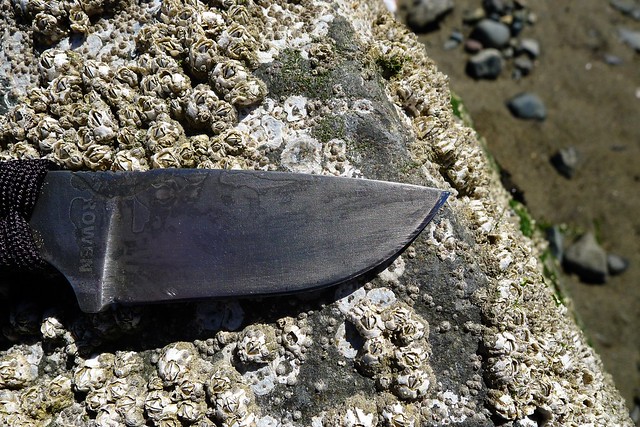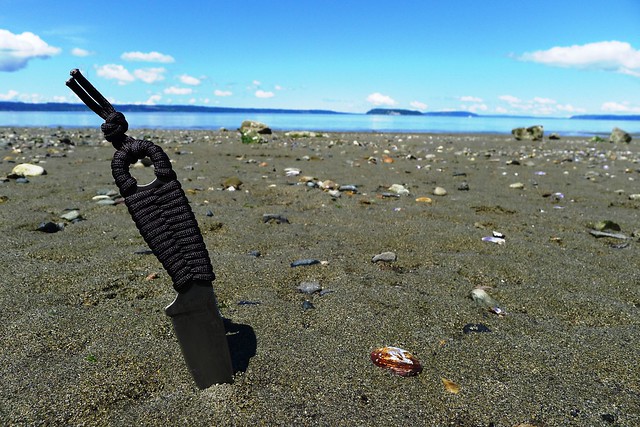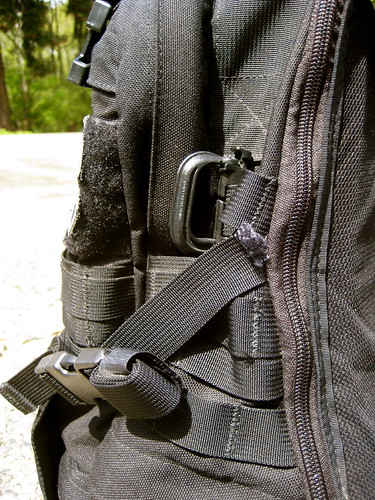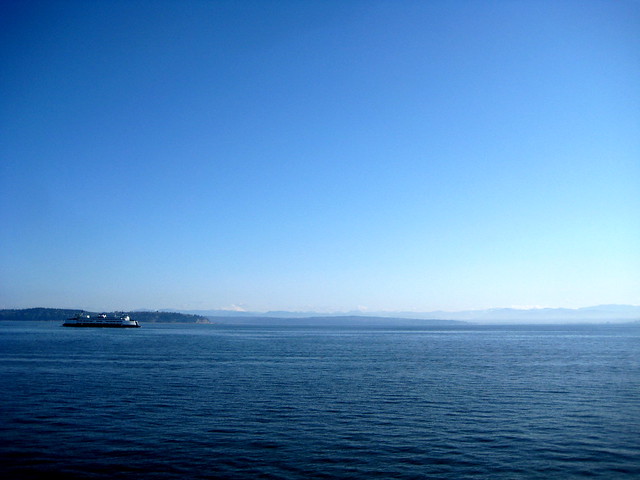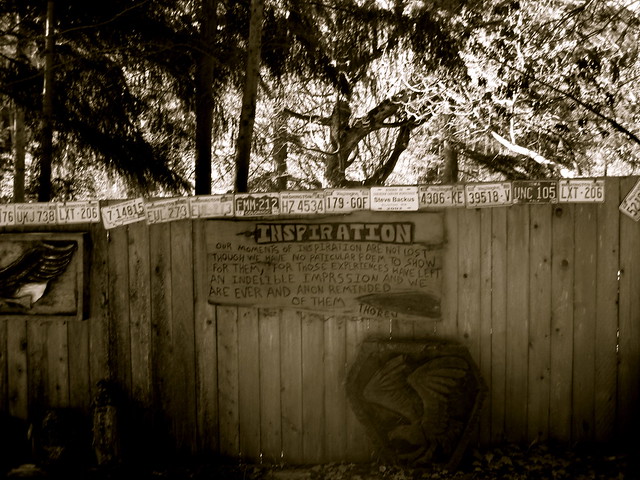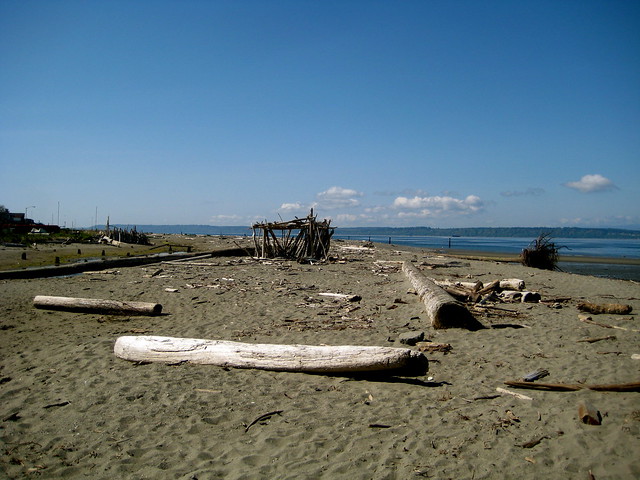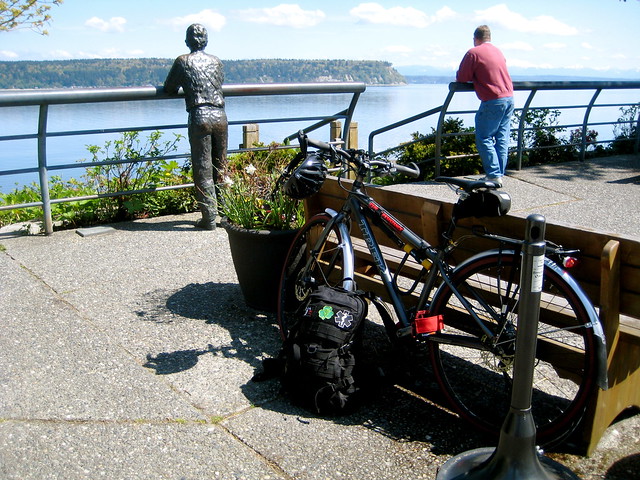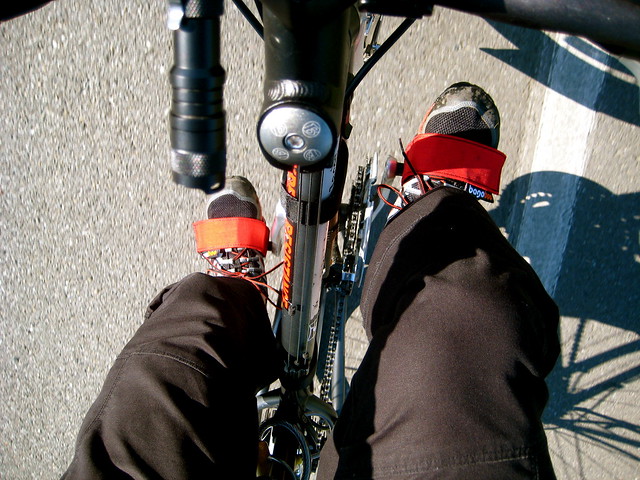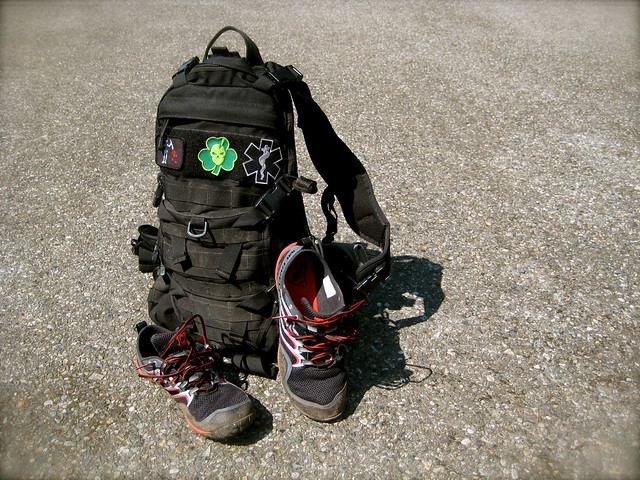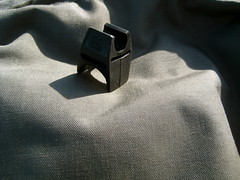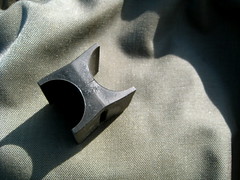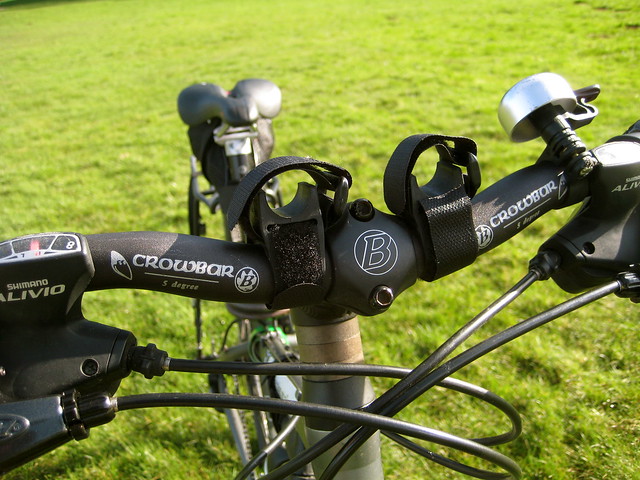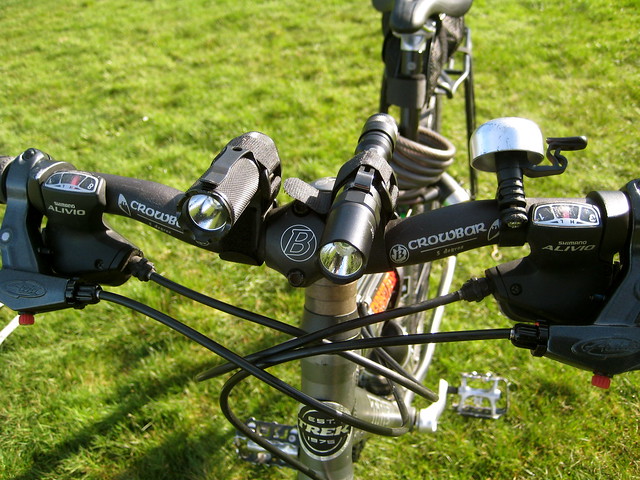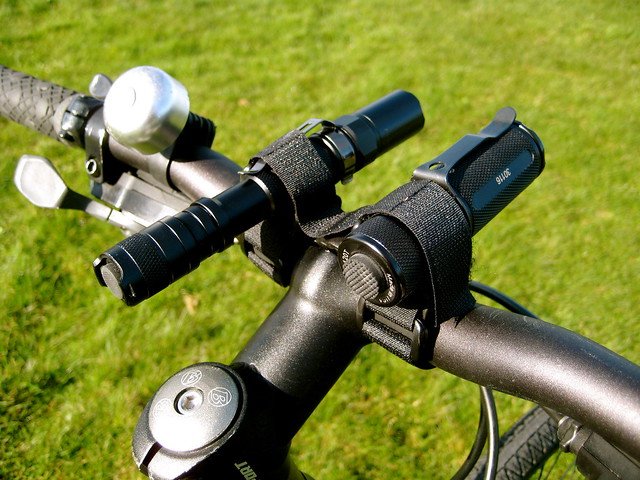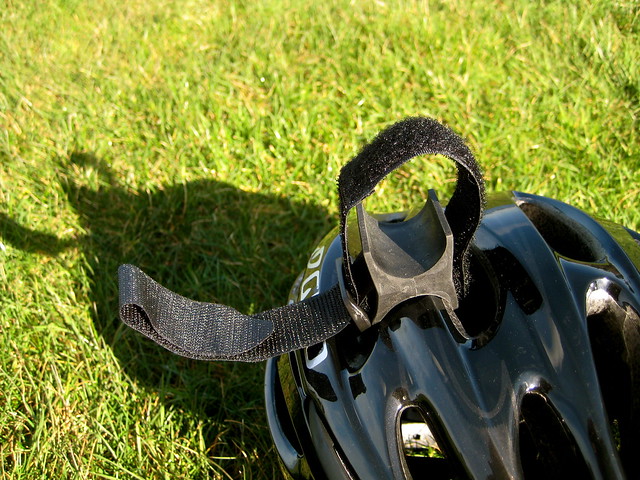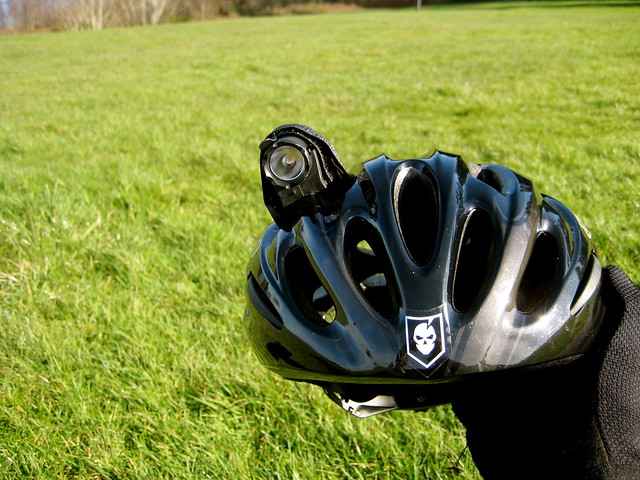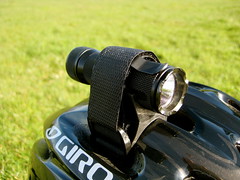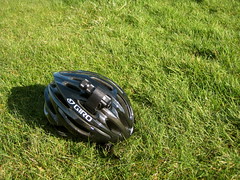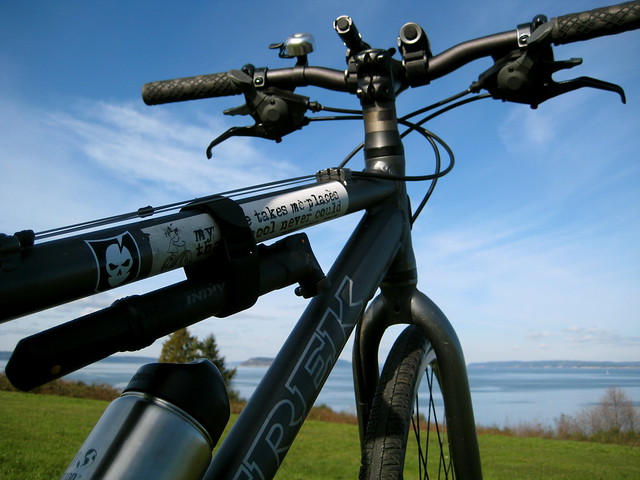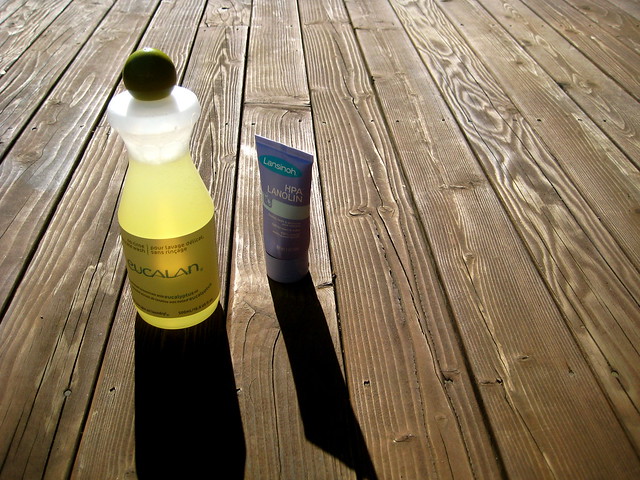You are currently viewing all posts in the general category.
Izula Knife Mods
About a month ago I gave my Izula a cosmetic make-over, inspired by Widerstand‘s similar mods to his Becker knives.
Originally the knife had a light tan powder coating on it, which protected the blade from rust and other wear, but did nothing for style. The first step I made in the modification process was to spend a couple hours with a piece of sandpaper, scraping off the coating until I was down to bare metal. That gave the knife a nice, raw look. But it also made it susceptible to rusting. The solution: a patina!
The last time I talked about patinas I achieved it with moldy potatoes and citrus fruit. This time around I went the easier route and dumped the Izula into a bowl of vinegar over night. I thought it looked great when it came out, and I was pleasantly surprised that I could still see the RAT logo and Izula ant. To finish off the coating I rubbed a little mustard on a few spots on either side of the blade.
The way the knife comes from the factory, the gimping is nice and rounded, providing a comfortable grip for the thumb. I almost never place my thumb on the back of the spine, so gimping doesn’t do much for me. And because it was rounded, it couldn’t throw any sparks off a ferro rod. To make the whole affair a bit more useful I took a Dremel tool and redid the gimping. It’s much more rough and sharp now, less ideal for thumbs but great for throwing sparks.
After that all that was left was to re-wrap the handle with a new piece of paracord – black this time – and the job was done. My favorite EDC knife: even better than before.
A Move to Django
You may not notice much, but this blog has been completely rewritten.
I started developing in Django last winter and quickly became smitten with both the Django framework and the Python. Most of the coding I’ve done this year has been in Python. Naturally, I had thoughts of moving this website from Wordpress over to a Django-based blog.
For a while I did nothing about it. Then I had another project come up that required some basic blog functionality be added to a Django-based site. A blog is – or, at least, can be – a fairly simple affair, but before writing my own I decided to look around and see what else was out there. There’s a number of Django-based blogs floating around (Kevin Fricovsky has a list), but few of them jumped out at me. Most were not actively developed and depended on too many stale packages for my taste, or they just had a feature set that I didn’t like.
Out of all of them, two presented themselves as possibilities: Mingus (written by the previously mentioned Kevin) and Nathan Borror’s django-basic-apps. Mingus tries to be a full-featured blogging application and was much too complex for the simple project I was then working on. But the blog application in django-basic-apps (a fork of which provides Mingus with its core blog functionality) looked like it would fit the bill. As the name implies, it is meant to be a very basic blog. I dived in to the code I discovered that, with a few modifications, it would do what I needed.
So I finished that project. But now having messed with blogging in Django I was more motivated to get started on rewriting my own site. I took another look at Mingus. Although it was too complex for the previous project, the features it provides are very similar to the features I wanted for this website. I looked at and thought about Mingus for a time, repeatedly turning it down and then coming back to it. The question centered around the project’s staleness more than anything else. Currently, Mingus is built for Django 1.1. That’s an old version. As of this writing, the current version is 1.3. Many improvements have been made in Django since 1.1 and I was not too keen to forgo them and run an old piece of code. Mingus is under active development, and will be updated for Django 1.3, but it’s a hobby-project, so the work is understandably slow.
In the end, I decided that the best thing to do was go my own route, but take some pointers and inspiration from Mingus. I would make my own fork of django-basic-apps, using that blog as the basis, and build a system on top of that. I created my fork last month and have been steadily plodding away on it in my free time. Over the course of the development I created a few simple applications to complement the core blog, and contributed code to another project.
It’s not quite done – there’s still a few things I want to improve – but it’s good enough to launch. (If you notice any kinks, let me know.) I’m quite pleased with it.
This is a notable occasion. I’ve been using Wordpress since before it was Wordpress, but it is time to move on. (Wordpress is a fork of an old piece of code called b2/cafelog. My database tables have been rocking the b2 prefix since 2002.)
As you’ve no doubt noticed, the look of the site hasn’t changed much. I tweaked a few things here and there, but for the most part just recreated the same template as what I had written for Wordpress. I am planning on a redesign eventually. For now, I wanted to spend my time developing the actual blog rather than screwing with CSS.
So, there you have it. Everything is open source. Download it, fork it, hack it (and don’t forget to send your code changes back my way). Let me know what you think. Build your own blog with it! (There’s even a script to import data from Wordpress.) I think it’s pretty sweet. The only thing lacking is documentation, and that’s my next goal.
Disqus
The biggest change for the user is probably the comments, which are now powered by Disqus. Consider it a trial. I’ve seen Disqus popping up on a number of sites the past year or so. At first it annoyed me, mostly because I use NoScript and did not want to enable JavaScript for another domain just to comment on a site. But after I got over that I found that Disqus wasn’t too bad. As a user I found it to be on par with the standard comment systems provided by Wordpress, Blogger, and the like. The extra features don’t appeal to me. But as an administrator, Disqus appeals to me more because it means that I no longer have to manage comments myself! And as a developer, I’m attracted to some of the things that Disqus has done (they’re a Python shop, and run on top of Django) and their open source contributions.
So I’m giving it a shot. Disqus will happily export comments, so if I (or you) decide that I don’t like it, it will be easy to move to another system.
Markdown
One final note: I like Markdown. That might be an understatement.
I first starting using Markdown on GitHub, which I signed up for about the same time I started with Django and Python. After learning the syntax and playing with it for a few weeks, I discovered that I had a very hard time writing prose in anything else. In fact, the desire to write blog posts in Markdown was probably the biggest factor that influenced me to get off my butt and move away from Wordpress.
So, I incorporated Markdown into the blog. But rather than just making the blog Markdown-only, I took a hint from Mingus and included django-markup, which supports rendering in many lightweight markup languages.
Because I’m still new to Markdown and occasionally cannot remember the correct syntax, I wanted to include some version of WMD. WMD is a What You See Is What You Mean editor for Markdown, a sort of alternative to WYSIWYG editors like TinyMCE. (It is my believe that WYSIWYG editors are one of the worst things to happen to the Internet.) All WMD consists of is a JavaScript library. The original was written by a guy named John Fraser, who was abducted by aliens some time in 2008. Since his disappearance from the interwebs, WMD has been forked countless times. I looked around at a few found a version that I was happy with (which happens to be a fork of a fork of a fork of a fork), and rolled it into a reusable app. While I was at it, I made some visual changes to the editing area for the post body. The result is an attractive post editing area that is simple to use and produces clean code. I think it is much better than what is offered by Wordpress.
TAD Gear FAST Pack EDC Strap Failure
Last week I noticed that the top right compression strap on my Triple Aught Design FAST Pack EDC had begun to rip off from the pack. This is the first failure I’ve experienced on the pack, which has been in regular use since Fall 2007.
I’m surprised that it was this particular strap that failed first. I don’t often carry heavy items in the Transporter Tail, so the strap does not have a lot of stress placed on it. Still, I feel better about sewing it back down than I would about repairing a load-bearing strap.
Now: A needle, a length of #69 nylon thread, and a bit of time.
Whidbey Island by Bike
I’ve toured Whidbey Island before by bus, car and foot, but never by bicycle. I decided to remedy that today. It was forecast to be warm and sunny (only the third day of the year I can say that about), so I woke up early to make the 9:00 AM ferry sailing.
Whidbey is a pleasant mixture of forest and pastoral farmland. I decided to confine my explorations to the south end of the island, as that’s the area I know least.
I logged about 45 miles in the saddle over a leisurely 6 hours, plus about 2 hours of breaks, including lunch in Langley.
Lighting My Ride with Twofish
For the past few years I have been using a cheap headlight from Cateye on the front of my bike. When turned on to the blink setting, it did an acceptable job of making me seen, but it did very little to light up the road. Last January I decided that I wanted to replace or supplement it with a better light.
I looked at the lights carried by various bike shops for a while, but none of them impressed me. The high end bike-specific lights are bright, to be sure, but they tend to be much more expensive than a hand-held light of comparable output.
I thought it would be neat if I could somehow attach a normal light to my handlebars. Not only would this be cheaper than purchasing the equivalent bike headlight, but the light would be multifunctional: appropriate either for my bike or my belt. None of my own hackish attempts to mount a normal light on the handlebars satisfied me, so it was with relief that I heard about a company called Twofish.
Twofish – not the cipher – is a company that makes a series of mounting devices for bikes. The two products that I purchased are the Lockblock and Bikeblock.
The Lockblock is a piece of rubber with perpendicular “U”s on either side. Each side fastens to an object with a small piece of hook-and-loop webbing. The Bikeblock is similar, but the two “U”s are parallel, and each side fastens to its respective object with a single continuous piece of hook-and-loop webbing. Lockblocks are to be used when you want to mount an object perpendicular to something else, such as a light on handlebars. Bikeblocks are appropriate when you want to mount the object parallel to something else, such as a pump to a frame. I bought three of each.
My first use of the Lockblock was to replace the Cateye headlight with my old Novatac 120T. The difference was immediately noticeable on my first night-ride. The 120T lights up the road, both bringing me to the attention of motorists and bringing potholes to the attention of me.
But I still thought it could be better. I wanted a second light.
Research showed that the Fenix LD20 was a popular choice to use in conjunction with Lockblocks. It blasts out a fair number of lumens and I liked that it ran on AA batteries rather than CR123s, so I picked one up.
The combination of the Fenix LD20 and Novatac 120T really light up the road. The Lockblocks hold both lights securely, and they make for a safe commute on long winter nights.
Although I was happy with this setup, I wanted to try using the parallel mount of the Bikeblock to add a helmet light into the mix. The Bikeblock fastens easily and securely across the vents of my Giro Stylus. Between my two lights, the shorter profile of the Novatac 120T made it more appropriate for a helmet mount.
I’ve been running the 120T on my helmet for about a week now. It’s nice to have the light point wherever I’m looking – and the ability to flash inattentive drivers is appreciated – but the light does add a noticeable weight. It’s annoying enough that I don’t keep the light on my helmet during the day, but so far I’ve been steadily putting it back after the sun sets. I haven’t decided if I’ll keep it up there, or if I’ll ditch the helmet light idea. I think that as winter turns to spring and the days lengthen, the Bikeblock will come off of my helmet.
I also use a Bikeblock for its intended purpose – to hold a pump to the bike frame. This is much more secure than my previous method, which consisted only of two pieces of hook-and-loop webbing.
Twofish’s mounts offer a serious challenge to the standard bike-light market. I’m pleased with both the Lockblock and Bikeblock and cannot see any reason to move back to a bicycle-specific headlight.
Novatac 120T Specs
- CR123
- Low: 0.3 Lumens (240 hours)
- Mid: 10 Lumens (14 hours)
- High:120 Lumens (30 minutes)
Fenix LD20 Specs
- AA
- Low: 5 Lumens (100 hours)
- Mid: 30 Lumens (15 hours)
- High: 81 Lumens (5 hours, 57 minutes)
- Turbo: 180 Lumens (2 hours, 16 minutes)
Lanolizing Wool
Lanolin is a kind of wax that sheep and other wool-bearing animals produce to protect their coats. It is, in fact, a waterproofing agent. Any lanolin that remains in the wool after shearing is generally stripped out during the process of turning the hair into clothing, thus reducing the wool’s ability to shed water.
Commercially, lanolin is often used as a skin treatment product for humans. Lansinoh, in particular, makes a pure-lanolin nipple cream for breast-feeding mothers.
I first learned about lanolin from a comment on my review of West German wool pants. Jenne, the commenter, recommended washing wool products using something called Eucalan. Eucalan is a natural wash that deposits lanolin in the wool. Rinsing isn’t necessary with Eucalan, so much of the hassle (and danger of felting) that is usually associated with washing wool can be avoided.
For an extra treatment, Jenne recommended dissolving a small amount of Lansinoh’s pure lanolin in hot water before adding the Eucalan.
I was intrigued by this method. The no-rinse aspect made it simpler than carefully washing wool with Dr. Bronner’s, which was my previous choice. And increasing the health and functionality of my wool by restoring the natural oils made good sense – the same thing must be done to leather. I bought both the Eucalan and the nipple cream.
Eucalan comes in a few different scents. I first bought the unscented version, which seemed most appropriate for outdoor wear. Later I bought a jug of the Eucalyptus version. Eucalyptus oil is a deterrent to moths and fleas, so Eucalan recommends using this version before storing wool garments for a while. (The eucalyptus scent is very subtle after the wool has been dried – you’re not going to go around smelling like flowers.)
I’ve since washed my West German wool pants, West German wool knickers, Italian wool knickers, and two Pendleton wool shirts – the majority of my non-merino wool clothing – in Eucalan with added Lansinoh and have been pleased with the results. I recommend giving it a shot if you wear wool in wilderness settings.
The Process
- Dissolve a small amount (about one inch) of Lansinoh HPA Lanolin in hot water
- Add enough room-temperature water to cover the garment to be washed
- Add about two cap-fulls of Eucalan and mix it in
- Add the wool to be washed
- Let soak for 15 – 30 minutes
- Pull out the wool, hold it up, and let the water drip out for a minute or two
- Lay the wool out on a dry towel
- Roll up the towel, gently squeezing out the water
- Lay flat to dry for 24 – 48 hours
